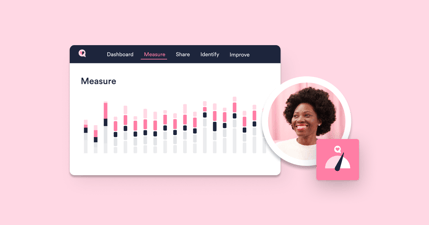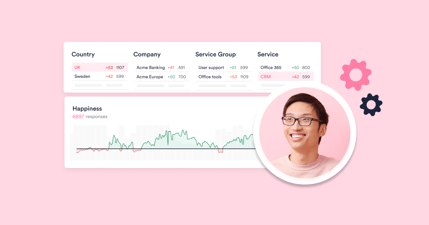In today’s IT landscape, delivering a seamless and satisfying user experience has become as critical as meeting technical benchmarks. IT Experience Management (ITXM) offers a transformative approach to decision-making by placing end-user happiness at the heart of IT strategies. By gathering and leveraging real-world feedback, ITXM enables organizations to prioritize impactful initiatives, align teams, and drive meaningful change across operational, tactical, and strategic levels. This blog explores practical examples of how ITXM can revolutionize IT decision-making, ensuring every decision contributes to measurable improvements in productivity, satisfaction, and business value.
Decision-Making in Different Governance Levels
We break down the practical example based on the operational, tactical, and strategic governance levels. Let's start with Operational.
Operational Level: Empowering the Frontline
Operational teams, such as service desks and network teams, are at the forefront of IT operations. By leveraging ITXM, these teams can focus on enhancing the end-user experience through unfiltered feedback.
Example 1: Service Desk Empowerment Feedback loops allow service desk agents to understand how their interactions affect end-user satisfaction. For instance:
- Agents receive real-time feedback on their technical explanations, learning whether they are clear, actionable, or overly complex.
- This fosters a sense of purpose, improving morale and encouraging self-improvement through additional learning or skills refinement.
Example 2: Issue Prioritization Operational teams can use ITXM data to prioritize issues based on user impact rather than technical severity. For example:
- If feedback highlights recurring complaints about slow Wi-Fi in a high-traffic office, addressing this can dramatically boost employee productivity and satisfaction.
Tactical Level: Aligning Teams and Projects
At the tactical level, ITXM provides actionable insights for teams working on projects or managing IT resources.
Example 1: Feature Prioritization in Applications Experience data can guide project teams to focus on features that users value the most. For instance:
- When developing a new internal application, data might reveal that simplifying the login process significantly impacts user happiness more than adding advanced analytics capabilities.
Example 2: Celebrating Wins Experience improvements driven by specific projects can be celebrated and communicated across the organization:
- After optimizing an HR portal, end-user feedback showed a 25% increase in task completion speed and a 15% jump in satisfaction scores.
- Sharing these results builds organizational momentum for ITXM-driven initiatives.
Strategic Level: Long-Term Business Alignment
At the strategic level, ITXM transforms IT from a cost center to a value-adding partner.
Example 1: Budgeting for Experience-Driven IT Using ITXM data, CIOs can align budget discussions with business outcomes. For example:
- A beverage company used ITXM insights to demonstrate that investing in improved remote work capabilities would enhance employee productivity and satisfaction, making a stronger case for increased IT funding.
Example 2: Vendor and Partner Selection ITXM insights can inform vendor evaluations by assessing their contribution to user satisfaction:
- A company might replace a service provider whose tools consistently result in low satisfaction scores, opting for a partner that better aligns with the organization's experience goals.
Making ITXM a Core Decision-Making Tool
To fully integrate ITXM into decision-making, organizations must:
- Foster a Feedback Culture: Encourage end-users to provide honest feedback without fear of repercussions.
- Use Data Across All Levels: Operational teams address daily issues, tactical teams prioritize impactful projects, and strategic leaders make informed long-term investments.
- Promote Transparency: Share experience data and improvements organization-wide to demonstrate the tangible value of ITXM.
ITXM empowers organizations to make decisions that resonate across all levels by shifting focus from technical metrics to user happiness and productivity. Whether improving daily operations, aligning projects with user needs, or shaping strategic goals, ITXM ensures IT decisions are impactful, measurable, and user-centered.
Learn more about ITXM via our ITXM Framework™, which combines years of experience of our customers into a roadmap you can follow.



